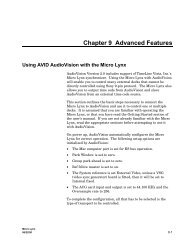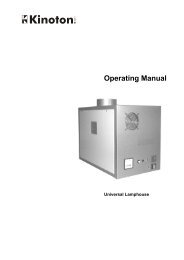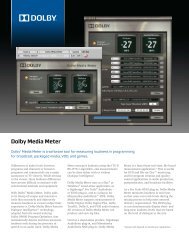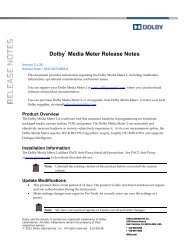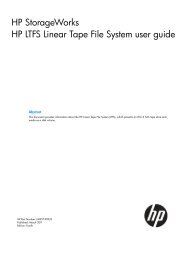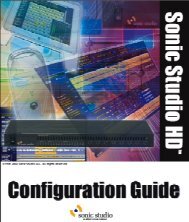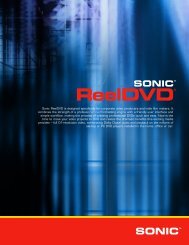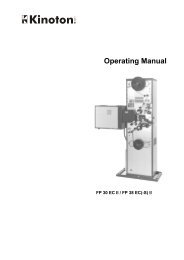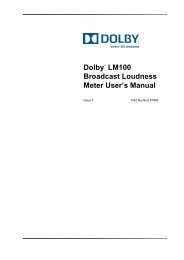Cable Reference Guide - Audio Intervisual Design, Inc.
Cable Reference Guide - Audio Intervisual Design, Inc.
Cable Reference Guide - Audio Intervisual Design, Inc.
- No tags were found...
Create successful ePaper yourself
Turn your PDF publications into a flip-book with our unique Google optimized e-Paper software.
AppendixVideo editing is normally a two-stage operation. First comesoffline editing. The person editing the show receives work tapes,i.e., copies of all the raw footage, with time code “burned in” sothat it’s visible in one corner of the picture. Any footage initiallyshot on film, is usually transferred to video at this point. Fromthe work tapes, a basic sequence of scenes is selected. Forexample, the second scene should be the bar room brawl thatoccurs, say, between addresses’ 05:40:59:11 and 05:44:12:22 on oneof the raw footage reels. In the finished program, this scene needsto start exactly six minutes, five seconds and nine frames(00:06:05:09) into the show and run to 00:09:18:20.When all the scenes have been sequenced in this manner, an EditDecision List (EDL) is compiled. The EDL is a complete, computerizeddirectory of the location of the scenes in the show, alongwith the addresses locating each scene in the raw footage.Later, when the project moves to online editing, the EDL can bedownloaded and the final video master assembled from the originalraw footage, which has been pristinely sitting aside while thework tapes endured the rigors of offline editing.<strong>Audio</strong>-For-VideoJust like the raw video footage, all the audio elements that go intoa video production must be assembled. This procedure isgenerally known as audio-for-video or audio post-production.There are several different branches of audio post, since there aremany different types of sound sources that go into a typical videoshow.First, there’s production audio, which is dialog and sounds recordedduring shooting. Often, incidental noises on the set,flubbed lines, and other uncontrollable aspects of the shoot makethe production audio unusable. Which brings us to the three mainbranches of post-production audio.For dialogue, there’s Automated Dialog Replacement (ADR) inwhich actors re-record production dialog in the controlled acousticenvironment of a sound studio. This replacement dialog is recordedonto audio tape that is locked to a video work print, whichthe actors carefully watch as they read their lines.Second, is Foley (named after the man who invented it), theprocess whereby an abundance of “real-life” sounds, i.e., footsteps,coat zippers, car door slams, etc., are recorded by specializedactors called Foley walkers. They also make their recording whilewatching a work print that’s synchronized, by SMPTE and aTimeLine synchronizer to an audio tape machine that records thesounds they make.Micro LynxA-18 06/22/00




